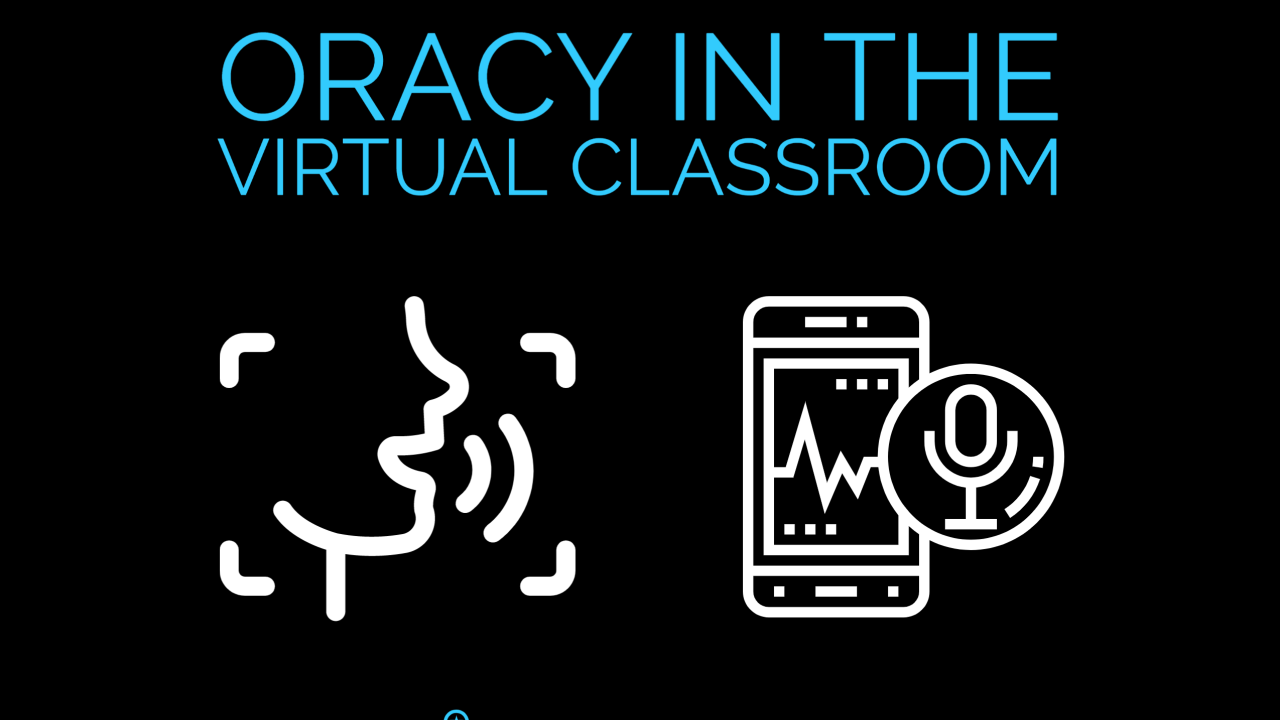Oracy in the Virtual Classroom

As a child I remember receiving my termly reports from school handwritten by my teachers; no mistakes allowed. Without it now, rewinding back time, how would we run our day to day lives in school; cellophane and OHPs, fax machines, reams of paper in the post, group phone calls, lessons via radio? While I jest, I struggle to imagine what teaching during a pandemic would be like without the tools many of us are lucky to presently have.
The Abyss
A recent post by Sarah Ledger titled “with mics on mute, teaching into the abyss” relays what many teachers are experiencing the world over and is the opposite of what as teachers we love and now remember as “normal.” Our virtual classroom can feel a cold and distant place in comparison to the buzz of face to face teaching, the acknowledgment of body language, hand gestures, facial expressions, the pose, pause, pounce, and bounce of discussion, the say it again but better, the “what questions do you have?” and our expectations of a more fluid and natural discussion of old. So how can we get that buzz of communication back in an online context?
How do we communicate?
Voice notes in collaborative documents or OneNote? Using collaborative documents for peer feedback? Individual videos for students? Whilst there is flexibility in each option, there can still be some time dilation coupled with the possibility that students might not act on the feedback or even listen to it. While I think these tools are genuinely useful in their own right and serve a great purpose, they don’t mediate the immediacy or emotiveness of a conversation. So what next?
Breakout Rooms
The breakout room functionality in Microsoft Teams is a welcomed addition to online classrooms the world over, teachers have raved about them, and rightly so, but having them isn’t an automatic proxy for improved communications. It’s what you do with the feature and how you traverse the abyss that can make the realest of differences. In a classroom it’s relatively simple, turn and talk to the person next to you then we will deliberately go about generating a discussion from their answers while highlighting the importance of both Oracy and explicitly training ourselves to think metacognitively. So how can we make better use of breakout rooms?
Why Oracy?
The word “Oracy” encapsulates the concept of oral comprehension and communication while being a foundation for literacy. Thus, communication is founded in Oracy. If talk supports thinking and thinking supports learning, get the students talking in a deliberate manner with a sharp focus on core components of knowledge. Where’s the possible solution to what we already know? After having Sarah Lambert and Danielle Duffy on #LearnLiveUAE, watch the episode here, discussing how to successfully embed literacy and Oracy in the classroom, I’ve been waiting for the holy grail of breakout rooms to trial the Voice 21 framework in my digital classroom. I’ve been trialing it with Year 10 students at my school (BISAD) focusing specifically on some of the linguistic, cognitive, and social elements to elicit increased communication amongst students but also to hone in on their structure and organization of talk using key terminology to further support their clarifying, reasoning and summarizing.
Raising the Scaffold
Telling students to talk “X” or share their thoughts with “Y” or even simply placing them in a breakout room isn’t enough from my experience of digital classrooms. Yes, some might talk naturally but what about the others? Most, if not all, students will benefit from some guidelines and roles to fulfill within the discussion to help guide their focus on the subject matter. These not only aim to raise the quality of talk but also set out specific ways students should interact with one another’s ideas in the safety of a small group via a Teams breakout room while getting them talking in a more meaningful and direct manner. It’s also helpful from the viewpoint of sticking on topic while also helping the students to hold one another to account as collectively they are responsible for the conversation so there’s an emphasis on improving together; collective accountability.
Stay up to date
Subscribe to the free GESS Education newsletter and stay updated with the latest insights, trends, and event news every week. Your email address will remain confidential


